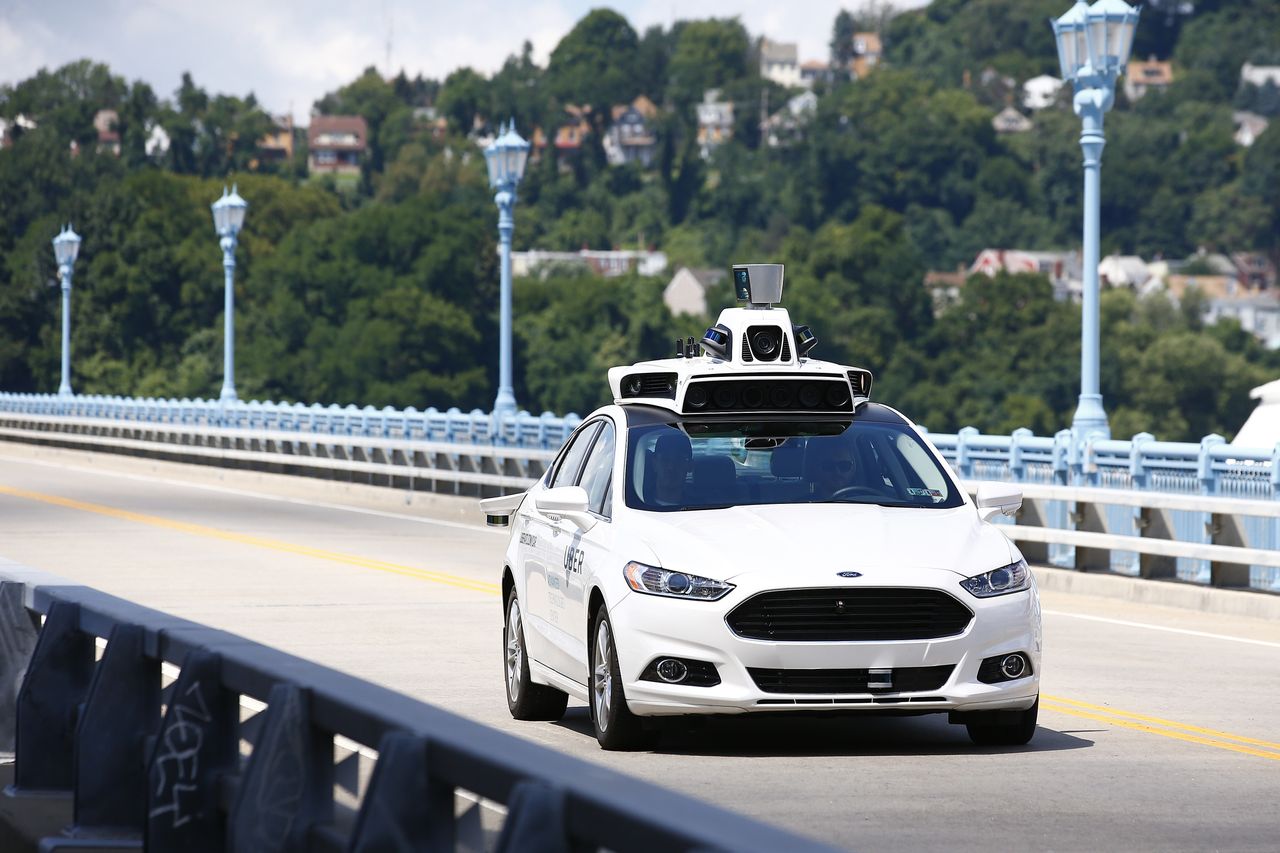How Uber solved its driver problem
The company takes circumventing workers' rights to a new extreme


If you're an Uber user in Pittsburgh, then starting this month you could hail a ride in a driverless car.
Bloomberg got the scoop from Uber founder and CEO Travis Kalanick: The company will be trying out a fleet of specially outfitted Volvos, capable of driving autonomously, thanks to a system of lasers, other sensors, and a liquid-cooled computer in the trunk.
But this news doesn't just represent a feat of technical engineering. It's also a feat of HR. Because Uber, the controversial poster child of the "gig economy," might have solved its labor problem by simply automating its drivers away.
Subscribe to The Week
Escape your echo chamber. Get the facts behind the news, plus analysis from multiple perspectives.

Sign up for The Week's Free Newsletters
From our morning news briefing to a weekly Good News Newsletter, get the best of The Week delivered directly to your inbox.
From our morning news briefing to a weekly Good News Newsletter, get the best of The Week delivered directly to your inbox.
You can get into a bit of a philosophic debate about what, exactly, Uber has contributed to society — or what justifies its sky-high market valuation. Obviously, the way it connects riders and drivers through its app is genuinely new. But another reason for its success is the way it's gotten around government regulations concerning workers' relationship to their employers.
Uber doesn't classify any of its drivers as full-fledged employees, but rather as independent contractors. That means Uber doesn't have to pay Social Security taxes on them; it doesn't have to contribute to workers' compensation system; it doesn't have to pay drivers overtime or sick leave; it doesn't have to provide them health benefits; and it isn't required to recognize unions among its drivers. This obviously makes the drivers a lot cheaper for Uber to "employ" than most workers for most businesses. Which in turn allows Uber to reduce prices and beat out the competition, even while taking a 25 percent cut of the average fare.
Yet this very favorable arrangement has recently grown more troublesome for Uber. The company faces an avalanche of lawsuits around the country over the way it classifies its drivers. States and cities and local governments are getting more aggressive about passing new regulations to force Uber and similar ride-sharing companies towards more traditional employment models.
Now, Uber's shift to driverless cars is very far from a done deal. The company has been working on a massive self-driving car technology project since at least 2015, and has been testing out the cars in Pittsburgh since at least May of this year. They've pulled in talent from Google, Motorola, Apple, and Tesla to help put together the system, which combines the onboard sensors and computer with GPS to create highly detailed maps of the terrain the cars are navigating, hopefully accurate down to the inch. But it still struggles to navigate things like bridges, and every autonomous Volvo will still have a human on hand in the driver's seat, to immediately take the wheel should anything go wrong.
So for the moment, Uber is stuck with its strategy of under-pricing the competition by gaming worker classification and compensation, and thus monopolizing various markets — a strategy that's under serious threat from all those lawsuits and new regulations.
But if this new driverless technology takes off, it would change the game: Uber would solve its worker problem by simply removing the workers from the equation. And not only would ride-sharing go automated, but taxis, bus services, and even trucking would all likely follow.
And just like there are two different ways to look at Uber itself, positive or negative, there are two different ways to look at the possibility of Uber going driverless. On the one hand, critics of Uber can look at this and celebrate the end of an exploitative form of labor. On the other hand, people who worry about the threat of technology displacing jobs could look at this and see another instance of hard-working Americans getting tossed aside in favor of robots.
Both interpretations speak to the underlying problem we keep running into in how the economic debate frames automation: To save jobs, we either have to hold back the advance of technology, or we have to keep workers so poorly compensated that employing them remains cheaper than investing in automation. Neither solution is ideal, to say the least.
In a better world, U.S. policymakers would be much better at ensuring there are always enough jobs for everyone, even if technology is constantly eliminating some and creating others. And the government would be much better at providing unemployment insurance, alternative incomes, and training, to make these employment shifts as painless for workers as possible.
But we haven't built that world yet. And in the meantime, the driverless cars just arrived in Pittsburgh.
Sign up for Today's Best Articles in your inbox
A free daily email with the biggest news stories of the day – and the best features from TheWeek.com
Jeff Spross was the economics and business correspondent at TheWeek.com. He was previously a reporter at ThinkProgress.
-
 What does the Le Pen verdict mean for the future of French politics?
What does the Le Pen verdict mean for the future of French politics?TODAY'S BIG QUESTION Convicted of embezzlement and slapped with a five year ban on running for public office, where does arch-conservative Marine Le Pen go from here — and will the movement she leads follow?
By Rafi Schwartz, The Week US Published
-
 Discount stores were thriving. How did they stumble?
Discount stores were thriving. How did they stumble?The Explainer Blame Walmart — and inflation
By Joel Mathis, The Week US Published
-
 Kaja Kallas: the EU's new chief diplomat shaping the future of European defense
Kaja Kallas: the EU's new chief diplomat shaping the future of European defenseIn the Spotlight Former Estonian Prime Minister's status as an uncompromising Russia hawk has gone from liability to strength
By David Faris Published
